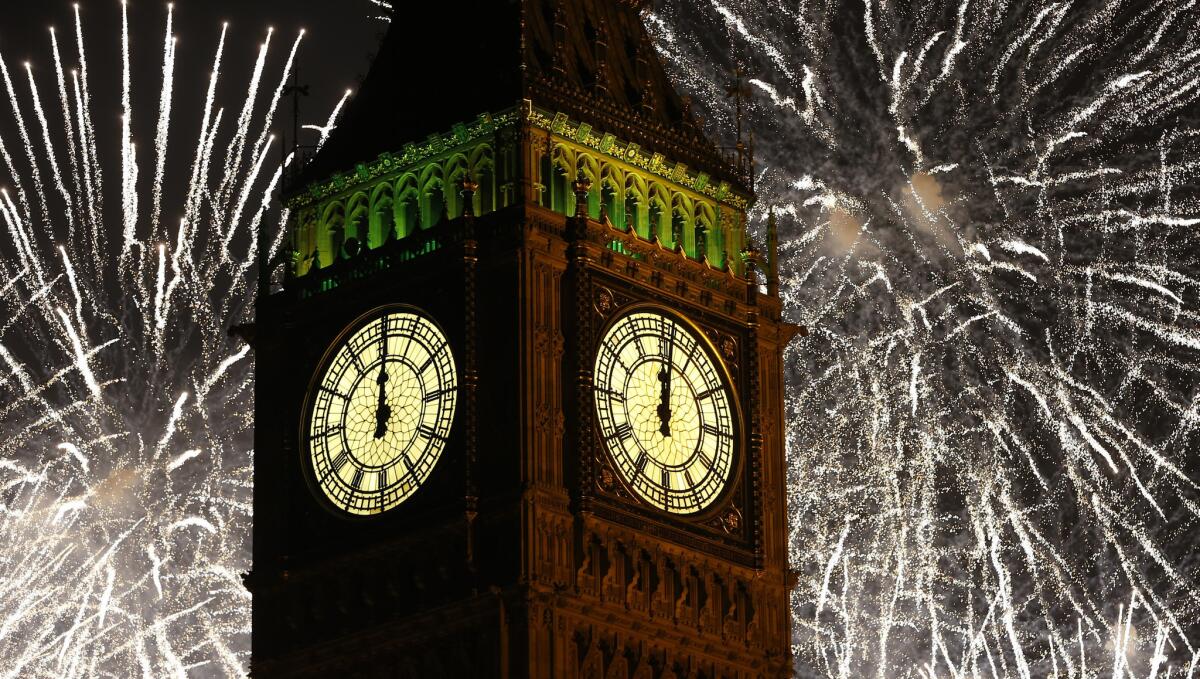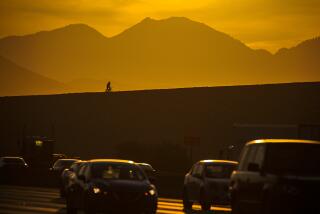‘Leap second’ will give you a (very) little more time in 2015

If you were hoping to find a little more time for yourself or your loved ones in the new year, you are in luck: 2015 is going to be exactly one second longer than 2014.
The “leap second” was decreed this week by astronomers at the International Earth Rotation and Reference Systems Service in Paris who measure Earth’s rotation and compare it to the time kept by atomic clocks. It’s the 26th time this has happened since atomic clocks started governing our time.
“It’s not like the leap day, which everyone knows about years in advance,” said John Lowe, who works at the National Institute of Standards and Technology in Boulder, Colo. “It’s not predictable. Nobody knows when the next one will be.”
The extra second will be tacked on to the final minute of June 30. On that day, the official atomic clocks that keep Universal Coordinated Time will mark the time as 23h 59m 59s, followed by the leap second 23h 59m 60s. July 1 will continue as usual, beginning with 0h 0m 0s.
The international timekeeping community has two ways of measuring the passing of our days. The first, known as astronomical time, is based on how long it takes Earth to make one complete spin on its axis. Scientists keep track of this by aiming a network of radio telescopes at a distant quasar.
Atomic time, on the other hand, defines a second as exactly 9,192,631,770 oscillations of a cesium-133 atom. This is what determines the time that displays on your computer or cellphone.
When the 13th General Conference on Weights and Measures came up with atomic time back in 1967, it was designed to be in sync with astronomical time. But it hasn’t always worked out that way.
“Atomic clocks keep uniform time scale, but the Earth does not,” said NASA geophysicist Richard Gross, who studies the planet’s motion at the Jet Propulsion Laboratory in La Cañada Flintridge. “The speed of the Earth’s rotation varies and changes.”
Large weather systems and atmospheric winds can exert enough force on Earth’s surface to cause it to slow down or speed up by thousandths of a second over a single season, Gross said. Meanwhile, movements of molten rock in the planet’s core can affect the speed of its rotation by four-thousandths of a second over a period of decades.
“Anything that causes a large-scale change in the movement of mass around the planet can change the Earth’s rotation,” he said.
Large volcanoes and earthquakes may also cause Earth to speed up or slow down, Gross said, but not by enough to be detectable. In 2011, he calculated that the magnitude 9 quake that struck off Japan may have shaved about 1.8 millionths of a second off the calendar.
In addition, as Earth spins on its axis, it wobbles with the jerky motions of a poorly balanced car tire. That wobbling often increases in winter, when ice and snow build up on the mountains of the northern hemisphere, where the bulk of the planet’s land mass is concentrated.
“It’s like a skater with her arms out,” Lowe said. “That buildup slows the Earth down, and when it melts, it’s like the skater has pulled her arms back.”
As Earth’s rotation has sped up and slowed down, the atomic clock has been ticking away at a steady rate. And that rate has been slightly too fast.
The discrepancy is due to a mistake made decades ago.
“The rate we chose for the atomic clock is slightly wrong,” said Lowe, who is in charge of the group that sends out the official time signal for the U.S. “We could have done a little better.”
Back in 1967, the length of a second was determined to be 9,192,631,770 oscillations, based on the time it took to get from one summer solstice to the next at the previous turn of the century. But if the timekeepers had gone with 9,192,631,950 oscillations instead, we would have needed only 10 adjustments over the last 48 years — five to add leap seconds to the official UTC time, and five to take leap seconds away.
“The atomic time scale has revolutionized technology and stabilized the time,” Lowe said, “but it is slowly drifting out of sync with our actual position in the cosmos.”
The astronomers at the International Earth Rotation and Reference Systems Service are charged with keeping track of the difference between astronomical time and atomic time. They call for a leap second to be added whenever Earth’s observed position is on track to be out of sync with UTC time by more than 0.9 of a second. Leap seconds traditionally are added on June 30 or Dec. 31.
Computers accommodate leap seconds by setting their clocks backward at the end of the day, Christopher Pascoe, a site reliability engineer for Google, explained in a blog post. And that’s a problem.
“Our systems are engineered for data integrity, and some will refuse to work if their time is sufficiently ‘wrong,’” he said.
In the past, the addition of a leap second has caused problems for tech companies like Google, LinkedIn and Reddit. Because leap seconds are not predictable, programmers can’t build them into their code the way they do for leap years. This is why the leap second is announced in advance.
There is some debate among horologists — as experts on measuring time are known — over how much it really matters that atomic time is in perfect sync with astronomical time. Even if the difference grew by one second every year, in 100 years the gap would only be less than two minutes. In 1,000 years, it would only be off by less than 17 minutes.
“The community is wondering if we can do away with leap seconds or not,” Gross said. “It would make a lot of people’s lives easier if we didn’t have leap seconds.”
But it would also be unsettling. Eventually.
“Part of the reason we have these leap seconds is to ensure that when the clock says it is noon, the sun is over your head,” he said.
Twitter: @DeborahNetburn







